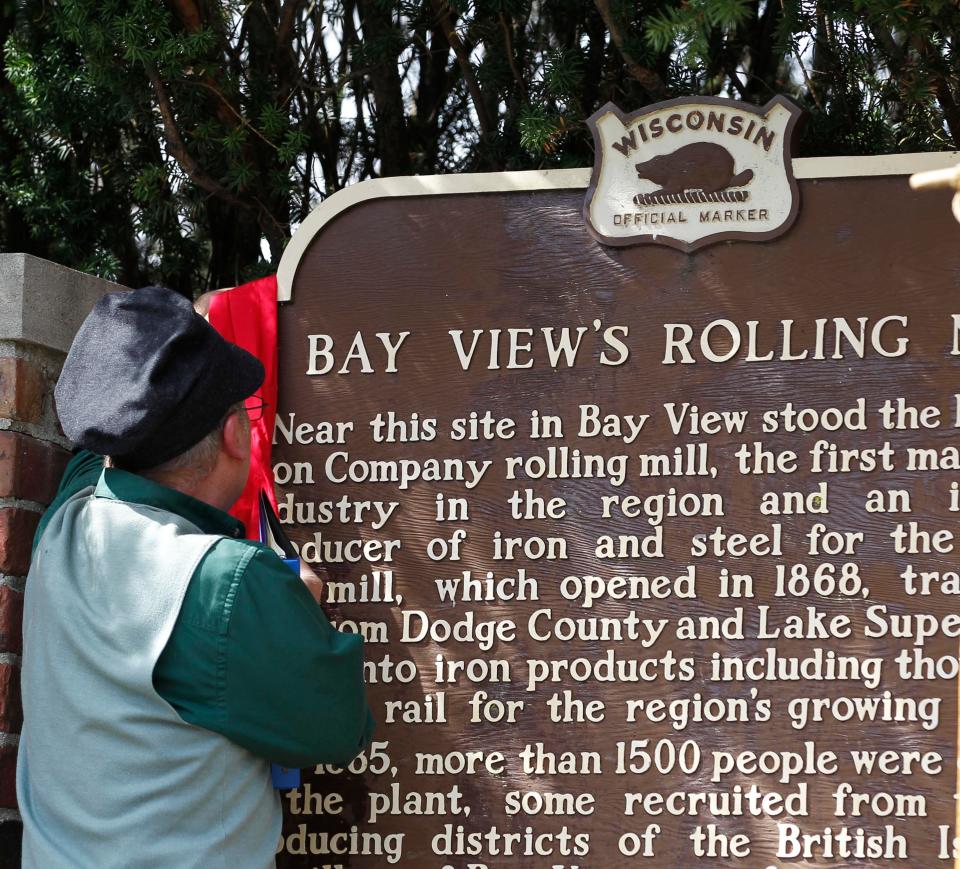The history of the Bay View Massacre and the Rolling Mills plaque
- Oops!Something went wrong.Please try again later.
Where Russell Avenue meets Superior Street in Bay View, an understated brown sign pays homage to one of the most significant sites in Milwaukee’s history: a 19th-century iron mill where a march for an eight-hour work day turned deadly.
The historical marker recalls the events of May 5, 1886: the Bay View Massacre.
That year, labor organizations nationwide were demanding an eight-hour work day, and they wanted it by May 1. Many Milwaukeeans were working 10-hour days, six days a week for paltry wages, Milwaukee historian John Gurda noted in his book “The Making of Milwaukee.”
As companies balked at the demand, strikes grew. By May 3, about half of Milwaukee’s men were on strike, Gurda found. They marched through the city, urging more workers to join them. Panicked officials called in militia from across the state after police were unable to “quell the disturbance,” the Milwaukee Journal reported.
On May 4, tension mounted at the Bay View mill where executives refused the eight-hour demand. Militia forcefully dispersed a crowd of protesters.

On the morning of May 5, about 1,500 marchers returned to the mill. When they were about 200 yards out, the militia fired. Among the seven dead was a 12-year-old boy.
The next day, streets were deserted. Local officials conferred about how to prevent “socialistic agitation,” deciding to arrest as many demonstrators as they could, the Journal reported.
Labor leaders, meanwhile, had public opinion on their side. They turned their focus to winning elections.
That year, the labor-backed People’s Party of Wisconsin won elections up and down the ballot, with priorities including progressive taxes, child labor restrictions, and arbitration of labor disputes, Gurda wrote. While socialist leaders initially supported that party, they later split and ran their own candidates, launching Milwaukee’s socialist era in 1910.
See the rest of Milwaukee's 100 objects
This article originally appeared on Milwaukee Journal Sentinel: The history of the Bay View Massacre and the Rolling Mills plaque

